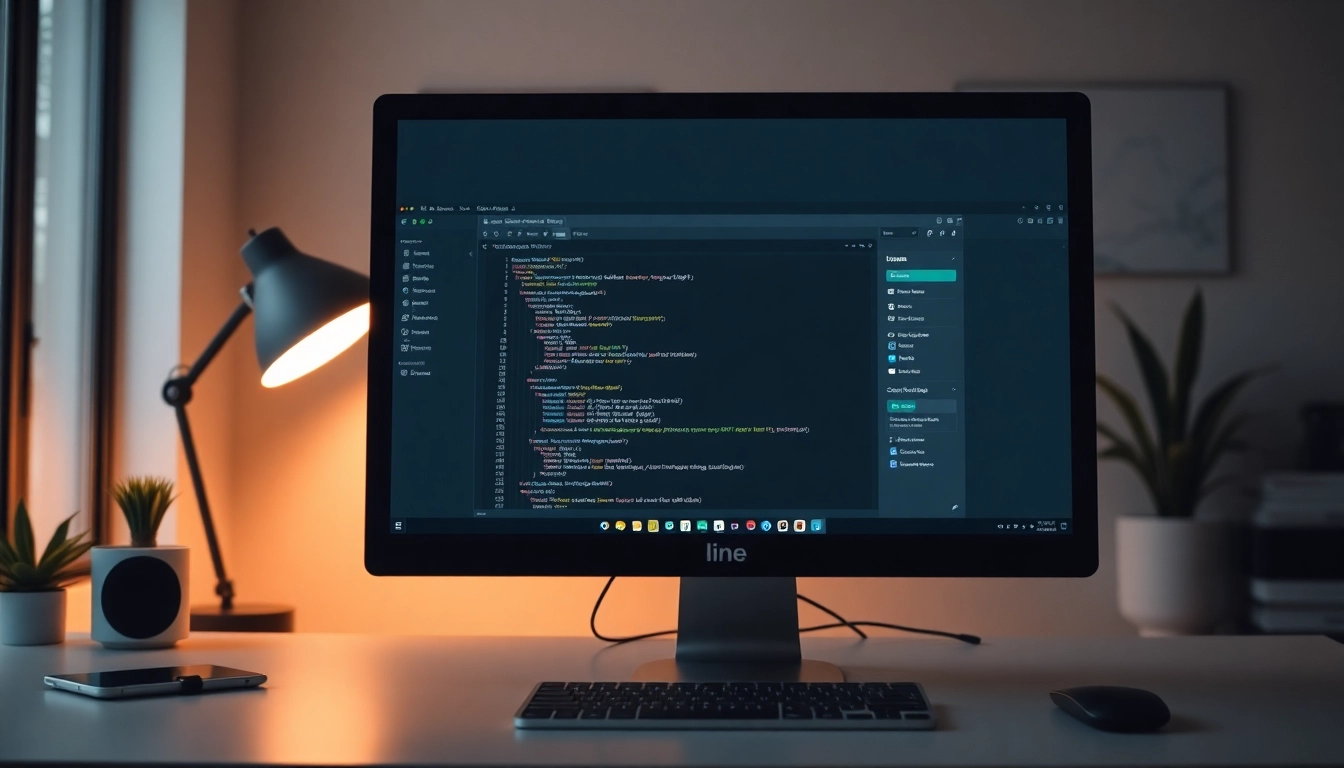Understanding the Basics of Website Design
In today’s digital landscape, having a strong online presence is essential for any business or individual wishing to connect with a broader audience. Central to this presence is the art and science of website design. But what does website design entail, and why is it crucial for success? This article will delve into the foundational concepts of website design, explore its principles, processes, best practices, and how it continually evolves with the advent of technology.
What is Website Design?
Website design is a multifaceted discipline that encompasses various skills and techniques focused on creating and maintaining websites. It’s not only about how a website looks but also how it functions. Good website design balances aesthetics with functionality, ensuring that users find the website visually appealing and easy to navigate. It integrates aspects such as web graphic design, interface design, and user experience (UX) to deliver an engaging digital platform.
Importance of User Experience in Website Design
User experience is at the heart of effective website design. A positive website experience can significantly increase user engagement and conversion rates. Key elements of user experience include:
- Usability: The website should be straightforward to navigate, allowing users to find what they’re looking for quickly.
- Accessibility: Websites should be designed to cater to users of all abilities and disabilities.
- Visual Appeal: A pleasing aesthetic draws users in and makes them more likely to stay and explore.
Prioritizing user experience not only enhances satisfaction but also encourages return visits, improving overall site performance.
Key Elements of Effective Website Design
When creating a website, several key elements must be considered:
- Layout: The arrangement of visual elements should guide the user’s eye through the content in a natural flow.
- Graphics: Images, icons, and visuals should complement the written content and contribute to the overall theme of the website.
- Content: High-quality, relevant content is crucial for engagement and search engine optimization (SEO).
- Navigation: Clear, intuitive navigation helps users find what they want without frustration.
In executing these elements towards a cohesive vision, designers can create websites that are not only visually stunning but also effective tools for communication and marketing.
Key Principles of Great Website Design
Visual Hierarchy in Website Design
Visual hierarchy refers to the arrangement of text, images, and other elements to convey their importance. By strategically placing the most vital information at eye level and utilizing size, color, and contrast, designers can guide visitors’ attention where it matters most. The goal is to ensure that visitors can quickly identify primary calls to action and essential information.
Color Theory and Its Impact on Website Design
Color theory plays a pivotal role in communicating the brand’s message and invoking desired emotions from visitors. Different colors can enhance perceptions of a brand and influence user behavior. For instance, blue often evokes feelings of trust, while red can incite urgency. Choosing the right color palette is fundamental to establishing an effective visual language for a website.
Typographic Choices in Website Design
The choice of typography significantly affects readability and user experience. Well-structured typography improves content consumption, particularly for long texts. Key considerations include:
- Font Selection: Choosing a font that reflects the brand’s personality while remaining legible across various devices.
- Size and Spacing: Proper sizing and spacing ensure that text is easy to read and visually pleasing.
Effective typography can enhance the overall impression of the website, making it feel professional and polished.
Website Design Process: Step-by-Step
Research and Planning for Your Website Design
The first step in the website design process is thorough research and planning. This involves understanding the target audience, setting clear goals, and analyzing competitors. Considerations should include:
- Defining the purpose of the website—whether it’s to sell products, showcase a portfolio, or provide information.
- Identifying the target demographic and understanding their needs, behaviors, and preferences.
- Performing a SWOT analysis to evaluate strengths, weaknesses, opportunities, and threats relative to competitors.
This foundational knowledge informs the subsequent design stages, ensuring that the website genuinely meets user needs.
Wireframing: Structuring Your Website Design
Wireframing is the blueprint phase of website design where rough layouts are created to indicate the structure and functionality of the site. Tools like Adobe XD or Sketch can facilitate this process. Key components include:
- Creating a layout that highlights the relationship between elements.
- Taking into account user flow to ensure intuitive navigation paths.
- Incorporating placeholders for content, images, and calls to action.
The wireframe serves as a visual guide, allowing stakeholders to agree on the site’s functionality before moving on to detailed designs.
Prototyping: Bringing Your Website Design to Life
Once wireframes are approved, the next phase is prototyping where designers bring the wireframes to life with colors, typography, and images. Prototypes can be interactive, allowing users to experience the navigation and functionality of the website. This phase offers a crucial opportunity to test and refine ideas before development begins. It helps to gather feedback from users, allowing designers to make necessary adjustments based on real interactions.
Best Practices for Responsive Website Design
Creating a Mobile-Friendly Website Design
With a growing number of users accessing websites via mobile devices, responsive website design has become a necessity. Responsive design ensures that a website renders well across various screen sizes and orientations. Key strategies include:
- Using fluid grids that allow elements to scale proportionally.
- Implementing media queries to adjust styles based on different device characteristics.
- Ensuring touch targets, such as buttons, are adequately sized for finger navigation.
Mobile-friendly design not only improves usability but also contributes to better SEO rankings as search engines favor responsive websites.
Testing and Improving Website Design Across Devices
Website testing should be a multi-device affair, ensuring compatibility across desktops, tablets, and smartphones. Regular testing can reveal potential issues with layout, performance, and content delivery. Tools for testing can include:
- Browser Developer Tools: Inspect how websites appear on different browsers.
- Real Device Testing: Use real devices to assess user experience.
- Online Testing Tools: Platforms like BrowserStack allow testing on multiple devices and browsers simultaneously.
Regular testing and updates based on user feedback can significantly enhance the overall effectiveness of a website.
Performance Metrics for Website Design
To measure the success of website design, specific performance metrics should be tracked. These may include:
- Page Load Time: Speed is crucial; a delay can lead to user abandonment.
- Bounce Rate: The percentage of visitors who leave after viewing only one page.
- Conversion Rate: The percentage of visitors who complete a desired action, such as signing up or making a purchase.
Analyzing these metrics provides insights into areas needing improvement, ultimately guiding future design iterations and adjustments.
Trends and Innovations in Website Design
Current Trends Influencing Website Design
Website design is continuously evolving as new technologies and user preferences emerge. Some current trends include:
- Minimalism: Stripped-down designs focus on essential elements, allowing users to concentrate on content.
- Dark Mode: Offers an alternative visual option that can reduce eye strain and save battery life on mobile devices.
- Micro-Interactions: Small animations that provide feedback to users, enhancing engagement.
Keeping abreast of these trends can help designers create modern, relevant websites that resonate with users.
Leveraging AI Tools in Website Design
Artificial intelligence tools have begun transforming the website design landscape, enabling tasks such as:
- Automated Design Solutions: AI can generate design templates based on user preferences and industry standards.
- User Behavior Analysis: AI analytics can interpret user data to improve design and functionality continually.
- Content Personalization: Tailoring web content based on user interactions and preferences enhances engagement.
Incorporating AI can lead to more efficient design processes and better overall user experiences.
Future Directions for Website Design Technologies
As technology continues to advance, the future of website design appears promising with developments such as:
- Augmented Reality: AR could reshape how users interact with websites, providing immersive experiences.
- Progressive Web Apps (PWAs): Combining the best of web and mobile applications for a smoother user experience.
- Voice User Interface (VUI): As voice search becomes more common, creating interfaces that respond to voice queries will be essential.
Anticipating these trends and technologies can position designers at the forefront of innovation, ensuring that their websites are not only functional but also future-ready.



